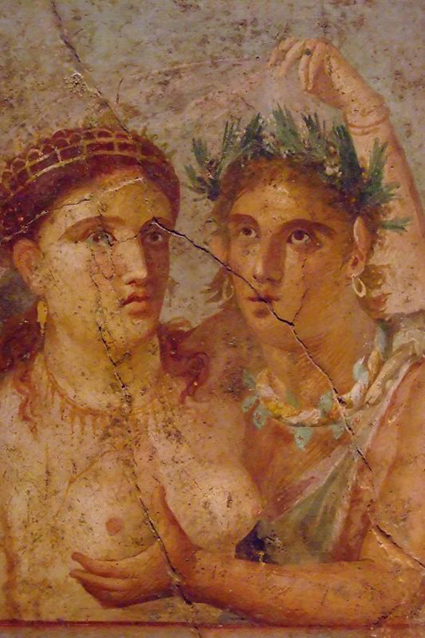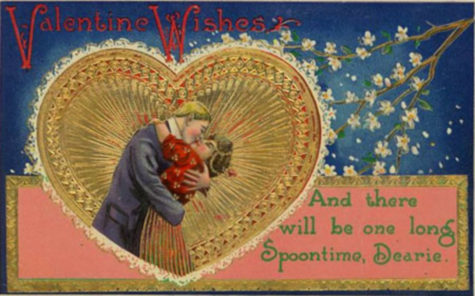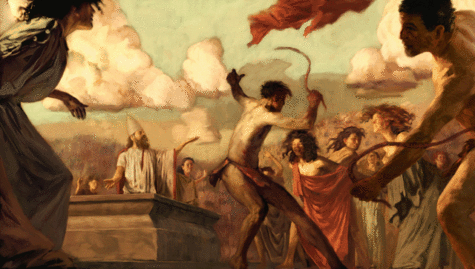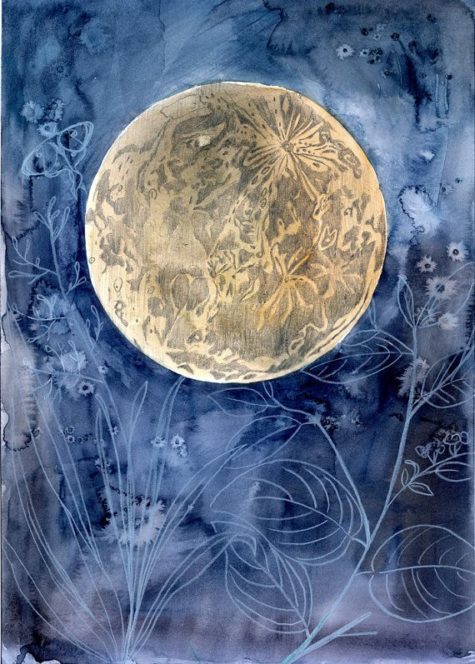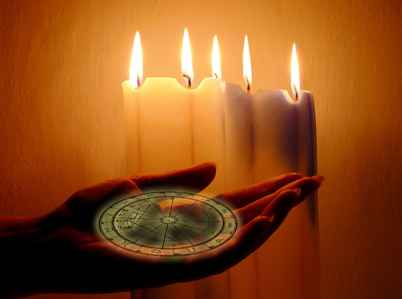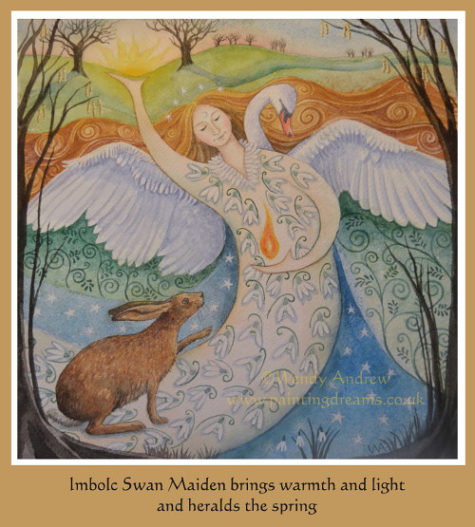Monthly Archives: February 2016
Throughout the year, the sun waxes and wanes. At the Winter Solstice, the shortest day of the year, the sun is only visible for a few short hours. Days become longer and at the Spring or Vernal Equinox, day and night are equal. At the Summer Solstice, the sun is visible for the longest period of time (the longest day of the year). Days start to become shorter and at the Autumnal Equinox, day and night are equal again. Finally, as the sun wanes, we are at the Winter Solstice again.
During a solar eclipse, we experience what might be called a “micro year”. The sun is whole, then partially or completely hidden, and then visible again. Within just a few minutes, an energy similar to a complete cycle of solstices and equinoxes can be felt.
In addition to this somewhat seasonal energy, we are aware of the Moon’s presence. Her shadow falls across the Earth as she appears between the Earth and the Sun. This adds the unification of solar and lunar energy, reinforcing the sense of wholeness, completion and cycles of a solar eclipse.
Consider this fact about solar eclipses: A solar eclipse can only occur during the day, on a new moon. This means that you are working with new moon energy (great for getting rid of things and letting go).
A solar eclipse does not have to be visible for you to work magic. You won’t be able to see every eclipse unless you can travel all over the world easily! Simply look at charts and almanacs to find the exact time of the eclipse, and work your magic then.
Solar eclipses are perfect for some specific types of magick. Consider the solar eclipse of June 10/11, 2002. Because this eclipse was close to the Solstice, the energy of the Solstice dominated the beginning of the eclipse.
In the Northern Hemisphere of the world, the sun is waxing as we near the Summer Solstice (In the Southern Hemisphere, the sun is waning and the Winter Solstice is approaching.)
When an equinox occurs at the time of the waning year (from the Summer Solstice to Yule) it is a good time to rid yourself of unwanted energies, bad habits, unhealthy patterns of thinking and acting, negativity, and other baneful things in your life. You can work with both the new moon energy, and the waning year energy, in addition to the energy of the eclipse.
Here’s an example:
Your ex-lover caused you a lot of pain. Whenever your new love gets close to you, you push away to prevent getting hurt again. You realize that you cannot fully love this new person until you let your guard down. About a half hour before the eclipse begins, you work to let go of the old pattern of pushing away. As the eclipse begins, you feel the pattern dissolving. As the eclipse is ending, you reinforce the growth between you and your new love, and the growing trust within you. This waning/waxing type of magic works well with eclipses.
Consider the time of year the solar eclipse will occur during. Is the sun waxing or waning? Next, consider the lunar influence, the moon is new and will be waxing in a day or two. Finally, consider the waning/waxing energy of the solar eclipse. Use this information to develop your own, tailor-made spells, rituals and rites.
Another interpretation:
A Solar Eclipse occurs in nature as a phenomenon when the Moon enters between the Sun and the Earth therefore blocking (or better thinking as filtrating) the light of the Sun. In astrology a Solar Eclipse is a very powerful New Moon, while every month has a new Moon, a solar eclipse occurs approximately every six months.
A Solar Eclipse can be seen as a very powerful New Moon where important beginnings or endings occur, it is the perfect time to work magic in your life especially related with previous thoughts and ideas that were holding you back.
You can imagine how a solar eclipse works by imagining the following narrative:
Imagine yourself as a caterpillar that has willingly entered in its cocoon of contemplation. You remember your old self, the thoughts you made and the actions that these thoughts have led you to take. You have all the ideas about yourself who you want to be and what you want to do with your future. All these ideas and thoughts-the past, present and future- coexist during this stage.
The solar eclipse will give you the power when you are ready to break this cocoon and will give you the boost to completely transform into a new form, the butterfly. Hence, the Solar Eclipse is the perfect timing for a Metamorphosis, transcendence to a new state of being. Cutting down all the restraints that were bounding you to the ground and give you the breeze to flip your wings and fly and explore the world with a new set of wise eyes.
A Solar eclipse is often described in alchemic and occult texts as the Alchemical Wedding where the Sun marries the Moon, a perfect balance.
Alternatively:
The solar eclipse is the symbol of the Dark Lord, also called the Lord of Shadows, the Leader of the Wild Hunt, Hades, Pluto and the death and resurrection aspects of Cernunnos, Dionysus — and, on a cosmic level, Shiva, among others. The Christian comparison is the portion of the crucifixion of Jesus when he descends into hell then resurrects. As such, the solar eclipse (the Bible story of the crucifixion states the sun darkened at 9.00 am) is a time for ritual observances that link the practitioner with the death passage portion of the cycle of life.
This is an opportunity to connect with the Shadowlands or the Underworld and to face one’s own fears and uncertainties about death. By confronting death through meditation, the face of Death is unmasked. The face one sees may initially be grotesque and horrible, but once the beholder accepts that this is also the face of the giver of life’s energy, that face changes and is beautiful to behold. This is the significance of focusing on the passage. By facing our fears, we gain insight and freedom — death is no longer to be feared.
Once a person is no longer fearful of death or the Underworld, the solar eclipse becomes a good time to honor ancestors, visit with the spirits of the departed, charge Craft tools of dark power magics and honor the Dark Powers.
The eclipse does not last long, so lengthy ceremonies would not be in order unless you create one that begins prior to the eclipse and encompasses the eclipse. Instead, if you are feeling connected, you may simply want to light some incense and a candle and invite some departed to visit with you for just a little while so you can ask for guidance, tell the person you love him/her, offer forgiveness or ask for it as the case may be, or use the time to celebrate your union with the Crone and the Dark Lord. It is also a good time to end anger and hostility, so that when the Sun reappears the Light will shine within you as well upon the Earth.
Sources:
- Green Witchcraft
- Ancient Magical Recipes Online
- Angel at Care2Share
Valentine’s Day has its roots in ancient orgiastic festivals. On February 14, The Romans celebrated Febris (meaning fever), a sacred sexual frenzy in honor of Juno Februa, an aspect of the goddess of amorous love. This sex fest coincided with the time when the birds in Italy were thought to mate.
The ecstatic rites of the Goddess merged over time with those of Lupercalia, the bawdy festivities in honor of the pagan god of sex, drugs and rock-n-roll, Pan, which were observed on the following day, February 15.
On Lupercalia, (named, incidentally, in honor of the she-wolf who suckled Romulus and Remus), men and women inscribed their names on love notes or billets and then drew lots to determine who their sex partner would be during this anything goes festival of erotic games.
Sulpicia, a first century BC Roman poet, describes her participation in the events with hearty candor:
“At last love has come. I would be more ashamed
to hide it in cloth than leave it naked.
I prayed to the Muse and won. Venus dropped him
in my arms, doing for me what she
had promised. Let my joy be told, let those
who have none tell it in a story.
Personally, I would never send off words
in sealed tablets for none to read.
I delight in sinning and hate to compose a mask
for gossip. We met. We are both worthy.”
Roman armies took their Lupercalia customs with them as they invaded France and Britain. One of these was the above mentioned lottery where the names of available maidens were placed in a box and drawn out by the young men. Each man accepted the girl whose name he drew as his love – for the duration of the festival, or sometimes longer.
Lupercalia, with its lover lottery, had no place in the new Christian order. In the year 496 AD, Pope Gelasius did away with the festival of Lupercalia, citing that it was pagan and immoral. He chose Valentine as the patron saint of lovers, who would be honored at the new festival on the fourteenth of every February. The church decided to come up with its own lottery and so the feast of St. Valentine featured a lottery of Saints. One would pull the name of a saint out of a box, and for the following year, study and attempt to emulate that saint.
The Feast of St. Valentine and the saint lottery lasted for a couple hundred years, but the church just couldn’t rid the people’s memory of Lupercalia. In time, the church gave up on Valentine all together. The lottery finally returned to coupling eligible singles in the 15th century. The church attempted to revive the saint lottery once again in the 16th century, but it never caught on.
During the medieval days of chivalry, the single’s lottery was very popular. The names of English maidens and bachelors were put into a box and drawn out in pairs. The couple exchanged gifts and the girl became the man’s valentine for a year. He wore her name on his sleeve and it was his bounded duty to attend and protect her. The ancient custom of drawing names on the 14th of February was considered a good omen for love.
By the early 1600s, handmade valentines were customarily sent from admirers to sweethearts. About 1800 the first commercial cards appeared. Cards were usually sent anonymously. As early as 1822, an English official reported having to hire extra postal workers on this day. In 1849, Esther Howland of Worcester, Massachusetts, started selling quality valentines so popular that she was called “Mother of the American Valentine.”
Sources:
Lupercalia is uniquely Roman, but even the Romans of the first century were at a loss to explain exactly which deity or deities were being exalted. It hearkens back to the days when Rome was nothing more than a few shepherds living on a hill known as Palantine and was surrounded by wilderness teeming with wolves.
Lupercus, protector of flocks against wolves, is a likely candidate; the word lupus is Latin for wolf, or perhaps Faunus, the god of agriculture and shepherds. Others suggest it was Rumina, the goddess whose temple stood near the fig tree under which the she-wolf suckled Romulus and Remus. There is no question about Lupercalia’s importance. Records indicate that Mark Antony was master of the Luperci College of Priests. He chose the Lupercalia festival of the year 44BC as the proper time to offer the crown to Julius Caesar.
February occurred later on the ancient Roman calendar than it does today so Lupercalia was held in the spring and regarded as a festival of purification and fertility. Each year on February 15, the Luperci priests gathered on Palantine Hill at the cave of Lupercal. Vestal virgins brought sacred cakes made from the first ears of last year’s grain harvest to the fig tree. Two naked young men (called Lupercii) asisted by the Vestals, sacrificed a dog and a goat at the site. The blood was smeared on the foreheads of the young men and then wiped away with wool dipped in milk.
The Lupercii them skinned the sacrificed goat and ripped the hide into strips which they tied around their naked waists and led groups of priests around the pomarium, the sacred boundary of the ancient city, and around the base of the hills of Rome. The occasion was happy and festive.
They then got drunk, and ran around Rome striking everyone they met with strips of the goat hide. This act supposedly provided purification from curses, bad luck, and infertility. Young women who were touched in this manner were thought to be specially blessed, especially in regards to fertility and procreation.
It is from these implements of purification, or februa, that the month of February gets its name.
Long after Palentine Hill became the seat of the powerful city, state and empire of Rome, the Lupercalia festival lived on. Roman armies took the Lupercalia customs with them as they invaded France and Britain. One of these was a lottery where the names of available maidens were placed in a box and drawn out by the young men. Each man accepted the girl whose name he drew as his love – for the duration of the festival, or sometimes longer.
Lupercalia, with its lover lottery, had no place in the new Christian order. In the year 496 AD, Pope Gelasius did away with the festival of Lupercalia, citing that it was pagan and immoral. He chose Valentine as the patron saint of lovers, who would be honored at the new festival on the fourteenth of every February. The church decided to come up with its own lottery and so the feast of St. Valentine featured a lottery of Saints. One would pull the name of a saint out of a box, and for the following year, study and attempt to emulate that saint.
If you are interested, you can read more about Valentine’s Day (and how it came to be what it is today) on it’s own separate page.
A modern approach to the Lupercalia is as follows:
- Themes: Love; Passion; Romance; Sexuality
- Symbols: Doves; Flowers; Berries; Trees; Pine Cones
- Presiding Goddess: Venus
About Venus:
Venus was originally an Italic goddess of blossoms; hearts and flowers have slowly become attributed to her loving, passionate energies. In fact, her name became the root for the word venerate – to lift up, worship, or esteem. So it is that Venus greets pre-spring efforts for uplifting our hearts with positive relationships.
To Do Today:
During Lupercalia, an ancient predecessor of Valentine’s Day, single girls put their names in a box, and unmarried men drew lots to see with whom they would be paired off for the coming year. To the more modern minded, try pinning five bay leaves to your pillow instead to dream of future loves. If you’re married or otherwise involved, steep the bay leaves in water and drink the resulting tea to strengthen the love in your relationship.
To encourage balance in a relationship, bind together Venus’s symbols, a pine cone and a flower, and put them somewhere in your home. Or, to spice up a passionate moment, feed fresh berries to each other and drink a berry beverage from one cup (symbolizing united goals and destinies).
In Roman tradition, anywhere there’s a large stone adjacent to a tall tree, Venus is also there. Should you know of such a place, go there today and commune with her warm lusty energy.
Sources:
The lunar eclipse is the symbol of the Crone, also called Hecate, Hel, Mother Hulda, the Snow Queen, Bone Mother, Demeter (when searching for Persephone and the earth’s vegetation dies) and Sekhmet. It is significant that the eclipse does not related to the Crone as Lady of Wisdom, who is part of the Crone image with the waning crescent-moon part of the lunar cycle, but focuses on the Lady as Passage. Now is a fine time for Dark magic and Sidhe magic.
The Lady as Passage offers transit between the worlds to Otherworld and the Sidhe, and her moon is the best time for magic involving Other People, or for seeking a companion from the Otherworld.
This lunar event additionally provides a person with the opportunity of drawing the subconscious, intuitive mind, which draws upon the Goddess as Transformer. She is the Dark Lady of the subconscious, intuitive mind, who then transforms the practitioner’s innate desire/will into reality as She Herself changes into the Mother. She gives birth to your desire in a ritual or meditation.
You focus on what it is you want, and as the Moon passes into darkness, envision the desire being gathered by the Crone, then passed into the arms of the Maiden as the sliver of Moon appears heralding the ending of the eclipse, and brought into manifestation by the Mother as the Moon is finally revealed.
From: Green Witchcraft II
The full moon in February is known as the Quickening moon, it marks the official end of winter, and the quickening, the renewal of all things. While the skies are still gray, and the weather is cold, beneath the surface life begins to secretly stir.
This moon phase is a time of abundance, ripening and completeness, heavy with fertility and female divinity. It is a time when the potential of all things begins to stir towards birth in spring, a time to work on our own inner power and confront personal truths in preparation for birth. This moon sheds enough light to help us see into our darkness, so that our energy can make its way to the surface to prepare for growth and healing.
This is the season of Imbolc, the days when we know that if we can just hold on for a few more weeks, we might get lucky and see little green shoots peeking out through the snow and slush.
Correspondences:
- Colors: Purple and blue
- Gemstones: Rose quartz, amethyst, jasper
- Trees: Rowan, Myrtle
- Gods: Brighid, Aphrodite, Juno, Mars
- Herbs: Hyssop, sage, myrrh
- Element: Fire
The word Quickening is also used to describe the first moment in pregnancy when a woman feels the movements of her baby. So too, this a time when new life is beginning, but still lies dormant. Pregnant animals, due in the spring, begin to feel the quickening of their unborn young. The earth itself is quickening, as seeds and bulbs far beneath the soil begin their journey towards the light. We know these things are coming — and we know also that this is a good month to make plans for the future. We can dream and hope, and set goals for ourselves. Accept responsibility for mistakes you’ve made in the past, and move on.
Magical workings this month should focus on personal achievements and advancement. This is an excellent time for fertility and childbirth spells.
From various sources
It’s no accident that Groundhog Day and Candlemas are celebrated together, for both signify the triumph of light over darkness, spring over winter. Candlemas was originally a Celtic festival marking the “cross-quarter day,” or midpoint of the season. The Sun is halfway on its advance from the winter solstice to the spring equinox.
Candlemas is the Christianized name for Imbolc, and all of the church candles are blessed for the year. The Virgin Mary is also honored. Today, this holiday is chiefly connected to weather lore. Even our American calendar keeps the tradition of Groundhog Day, a day to predict the coming weather. The Groundhog Day tradition tells us that if the Groundhog sees his shadow, there will be six more weeks of bad weather. An old British rhyme instructed:
If Candlemas day be fair and bright,
Winter will have another flight.
If Candlemas day be shower and rain,
Winter is gone and will not come again.
We pagans see the God as an infant during the time of Imbolc, and he is nursing from the Goddess and growing in power. It is the time for banishing Winter. We gather together the greens that adorned our homes during the Yule, and then we add these greens to the Imbolc fire. We chant and dance saying “We banish Winter! We welcome Spring!”
We light candles in each window and let them burn throughout the night. It is also an appropriate time for dedicating yourself to the Pagan path and purifying your home. You can also make candles for the coming year and consecrate new ritual items.
The Christian church expanded this festival of light to commemorate the purification of the Virgin Mary and her presentation of the infant Jesus in the Temple. Candlelit processions accompanied the feast day.Since the traditional Candlemas celebration anticipated the planting of crops, a central focus of the festivities was the forecasting of either an early spring or a lingering winter.
Sunshine on Candlemas was said to indicate the return of winter. Similarly:
“When the wind’s in the east on Candlemas Day
There it will stick till the second of May.”
A bear brought the forecast to the people of France and England, while those in Germany looked to a badger for a sign. In the 1800s, German immigrants to Pennsylvania brought their Candlemas legends with them. Finding no badgers but lots of groundhogs, or woodchucks, there, they adapted the New World species to fit the lore. Today that lore has grown into a full-blown festival, with Punxsutawney Phil presiding. For all things groundhog, visit the folks at Punxsutawney and see what Phil is predicting this year.
Sources: Almanac.com and Rose Ariadne
Celebrated on February 2nd, Imbolc or Imbolg, (pronounced “IM-bulk” or “EM-bowlk”), also called Oimealg, (“IM-mol’g), by the Druids, is the festival of the lactating sheep. It is derived from the Gaelic word “oimelc” which means “ewes milk”. Herd animals have either given birth to the first offspring of the year or their wombs are swollen and the milk of life is flowing into their teats and udders.
It is the time of Blessing of the seeds and consecration of agricultural tools. It marks the center point of the dark half of the year. It is the festival of the Maiden, for from this day to March 21st, it is her season to prepare for growth and renewal. Brighid’s snake emerges from the womb of the Earth Mother to test the weather, (the origin of Ground Hog Day), and in many places the first Crocus flowers began to spring forth from the frozen earth.
The Maiden is honored, as the Bride, on this Sabbat. Straw Brideo’gas (corn dollies) are created from oat or wheat straw and placed in baskets with white flower bedding. Young girls then carry the Brideo’gas door to door, and gifts are bestowed upon the image from each household. Afterwards at the traditional feast, the older women make special acorn wands for the dollies to hold, and in the morning the ashes in the hearth are examined to see if the magic wands left marks as a good omen.
Brighid’s Crosses are fashioned from wheat stalks and exchanged as symbols of protection and prosperity in the coming year. Home hearth fires are put out and re-lit, and a besom is place by the front door to symbolize sweeping out the old and welcoming the new. Candles are lit and placed in each room of the house to honor the re-birth of the Sun.
Another traditional symbol of Imbolc is the plough. In some areas, this is the first day of ploughing in preparation of the first planting of crops. A decorated plough is dragged from door to door, with costumed children following asking for food, drinks, or money. Should they be refused, the household is paid back by having its front garden ploughed up.
In other areas, the plough is decorated and then Whiskey, the “water of life” is poured over it. Pieces of cheese and bread are left by the plough and in the newly turned furrows as offerings to the nature spirits. It is considered taboo to cut or pick plants during this time.
As with all the Sabbats it is a time to celebrate the changes in the land around us. It is important to be outside to see, feel, smell, and appreciate the way that nature is changing, to pay our respects to the Gods and to seek their guidance for the coming season.
 You can either take a walk to a favorite place, where you will be able to appreciate the changes around you, or as this is a time of new beginnings, it can be interesting to take a new route. Whichever your choice, take with you a small amount of spring water, or collected rain water. As you go, take care to notice the signs of new life and growth and wherever you see new shoots, buds, or leaves sprinkle a few drops on the plant and give thanks to the Goddess.
You can either take a walk to a favorite place, where you will be able to appreciate the changes around you, or as this is a time of new beginnings, it can be interesting to take a new route. Whichever your choice, take with you a small amount of spring water, or collected rain water. As you go, take care to notice the signs of new life and growth and wherever you see new shoots, buds, or leaves sprinkle a few drops on the plant and give thanks to the Goddess.
If you should come across a well or a spring, take the time to make an offering to the waters within. If you have finished the water you brought then your offering should be something which will not contaminate the water in any way. Where a tree grows close to this water you can also tie a single hair to one of its branches and ask for a Blessing for yourself or someone close to you.
If you should be lucky enough to pass grazing land look out for the first lambs of the year. If you see your first lamb of the year on this day you can make a wish.
As this is a time of new life and growth, it is appropriate to plant bulbs or flowers or to sow seeds. However, you will need to use your judgement and some local knowledge to decide whether to actually do so at Imbolc or whether to wait a week (or several) until the last frosts have passed. Of course seeds can often be started indoors and planted out a month or so later.
A word of caution here – if you are unlucky and your seedlings or plants fail, try not to read anything ‘significant’ into this. Unless and until you are an experienced and seasoned gardener, or unless you naturally have ‘green fingers’ you are quite likely to have a less than impressive success rate the first few times.
If you don’t have access to a garden, you can always choose an indoor plant to nurture. Many of the herbs that Witches use in their Magic, as well as their kitchen, will grow quite happily on a window sill. Rosemary and lavender are perhaps the two most useful, as well as having a pleasant scent all year round.
Celebrating Imbolc can be as easy as saying a prayer or as complicated as doing an elaborate ritual. The thing to remember is that it be meaningful and done with intent. Remember also that the Imbolc season runs through the actual day of Imbolc until the Spring Equinox; if you miss the exact day, you haven’t missed out on celebrating. The following is a list of activities to do alone, with a partner, or with your child to honor nature and deity as we travel ever closer to spring. Continue reading
In Celtic times the day was considered to begin at dusk the preceding night, so all major celebrations would commence the night before the day of the festival, much as New Year festivities start on New Year’s Eve.
Also called Imbolg, Oimelc and Candlemas, this is the festival of Bride or Bridget. It celebrates the Goddess’s transformation from Crone to Maiden and heralds the coming Spring and the change from dark to light. One of the ways to celebrate this is with a Circle of lights.
The dates given for this sabbat vary. On some calendars it is given as Feb 1st and on others Feb 2nd. I think the confusion might possibly stem from this practice of commencing the celebration the night before.
Everyone gathers in a Circle, lit only by a single black candle; the wick should be trimmed to give the smallest of flames. Each person has an unlit white candle. When everyone is ready someone says:
“This is the festival of Imbolg and the first signs of returning life tell us that Spring is on its way.
Let us light the path for the new season and say farewell to the old.
Blessed Be.”
They light their white candle from the black one, state something they wish for in the coming season, and extinguish the black candle. Going around the group Deosil (clockwise), each person states their own hopes and lights their candle from that of the person next to them. When all the candles are lit, everyone says together:
“We welcome the Goddess as Maiden,
We welcome the signs of new life.
We welcome the coming Spring.”
The candles can be placed somewhere safe to burn whilst everyone enjoys a feast or, if this is not a family celebration, they may be extinguished and taken home to bring Spring into everyone’s homes.
From: The Real Witches’ Year
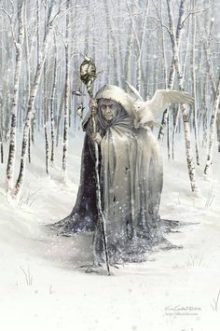 Là Fhèill Brìghde is the day the Cailleach gathers her firewood for the rest of the winter. Legend has it that if she intends to make the winter last a good while longer, she will make sure the weather on February 1 is bright and sunny, so she can gather plenty of firewood to keep herself warm in the coming months. As a result, people are generally relieved if February 1 is a day of foul weather, as it means the Cailleach is asleep, will soon run out of firewood, and therefore winter is almost over.
Là Fhèill Brìghde is the day the Cailleach gathers her firewood for the rest of the winter. Legend has it that if she intends to make the winter last a good while longer, she will make sure the weather on February 1 is bright and sunny, so she can gather plenty of firewood to keep herself warm in the coming months. As a result, people are generally relieved if February 1 is a day of foul weather, as it means the Cailleach is asleep, will soon run out of firewood, and therefore winter is almost over.
Visit The Powers That Be for more information about the Cailleach,


